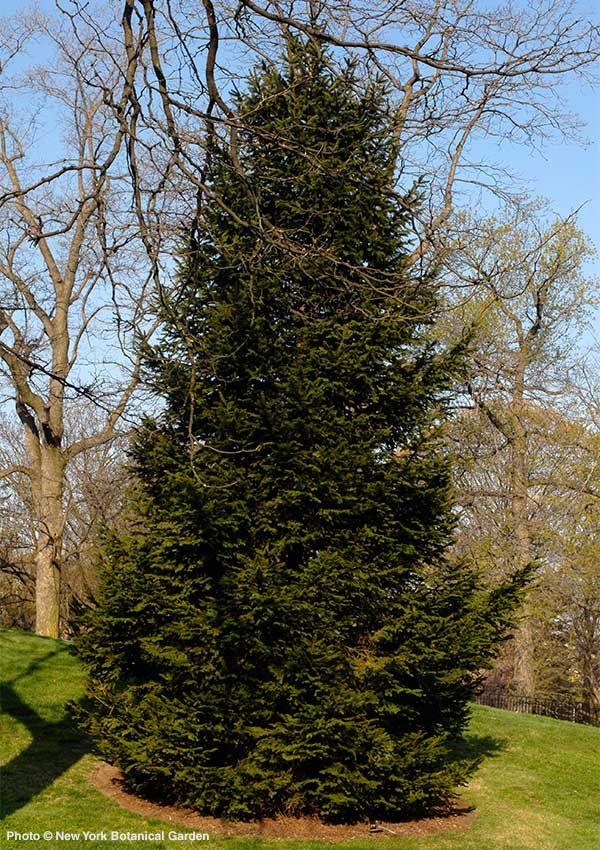Now live: The 2025 Canopy Report. Learn how Americans see trees. GET THE REPORT
Picea abies
The English resisted calling the Norway spruce by its name, instead referring to it as the “common spruce.” The Finnish claimed it as their own, calling it the Finn spruce, while others, the European spruce. Regardless of what you call it, the Norway spruce is a European staple. Best known for its durability and towering heights, the Norway spruce has spread its popularity across the Atlantic and into the U.S., becoming an American favorite.
What makes this tree even more likeable is its multiple uses. It is an important lumber crop in Europe, producing a strong light-weight wood with a straight grain, making it an ideal choice in construction. It’s a great landscape tree for its dense foliage and tall heights. The tree’s natural pyramidal shape and green color make it one of the most popular Christmas trees in the country.
Here are a few things to note if you’re considering adding a Norway spruce to your tree family.
Environmental Conditions:
- Does well in acidic, clay, loamy, moist, sandy and well drained soils (hardiness zones 3-7).
- Does well in full and partial sun.
- Medium to fast growing tree, growing up to two feet a year and reaching 40-60 feet at maturity.
Physical Attributes:
- Has dark green, one inch needles with squared tips, needles are retained for six to seven years before dropping.
- Has a thin, reddish-brown bark that thickens and flakes off as the tree ages.
- Cones start to form at age 30, with seeds dropping during the winter or early spring, providing food for wildlife.
Tag us in a photo with your Norway spruce!





